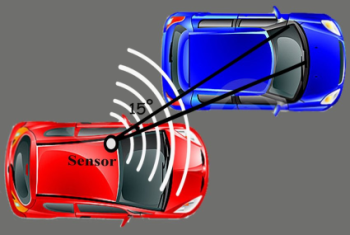Some time ago we posted an article in LinkedIn about the technology behind ultrasonic sensors which was quite tech heavy. This time however, we want to focus more on the wide variety of ultrasonic sensing applications. Before we discuss this, let’s recap with a brief technical background.
Ultrasonic waves are essentially high frequency sound waves humans can’t hear. The propagate through the air, reflect and scatter. An ultrasonic sensor transmits a short burst of signal, waits for a reflection from an object of interest and calculates the distance to the object based on the time taken for the echo to reach the receiver. The longer it takes, the further the object. Multiple echoes means multiple objects and hence multiple distances to be calculated.
Another application is a garbage bin sensor to detect how full the bin is. The sensors measure the distance from the top of the bin to the top of the rubbish. One challenge is if a long thin object is placed in the bin such as a pole or a thin carboard box, the top of it will be detected and the bin will appear to be full, yet there is a lot of space around this object, so the bin is not full. Smarts in the software are required to detect this.
A similar application is water tank level measurements. The methodology is the same as the bin application. The only issue is churn in the water level during a period of high inflow during a storm, but that can be averaged out in software to calculate the correct level.
A novel application is a luggage suitcase that follows the owner. The suitcase has a receiver with two sensors, and the user wears a transmitter. It triangulates the received signal so it knows if it’s on the left or the right of the owner as one sensor will receive the signal sooner than the other. Assuming it has motorised wheels, it will correct it’s trajectory to remain in line with the user. The issues are many and it explains why they are not popular. Imagine a busy airport with people everywhere. It will be a plethora of reflections and hence echoes and interference.

